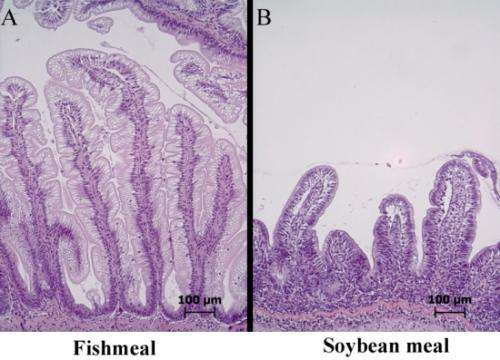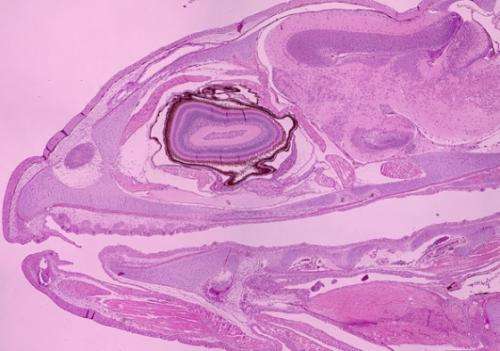Salmon fry have less sensitive intestines than smolt

A PhD research project at the Norwegian School of Veterinary Science has provided essential knowledge about the mechanisms leading to feed-induced enteritis in salmon and also insight into the salmon's intestinal immune defence system.
This research provides a good foundation for developing new types of salmon feed, which must be based on new ingredients.
Norwegian salmon farming has experienced an extremely high growth rate since its small beginnings in 1970 and the industry seems to be still growing. Fundamental and targeted research has always been an important prerequisite for this growth. Nevertheless, we still do not know enough about a number of fundamental, biological factors that are essential for achieving continued growth in the industry and for safeguarding fish welfare.
One example is a lack of basic understanding about the physiology of the salmon's digestive system in the early stages of life. Furthermore, we know little about the long-term consequences for the development and health of salmon when feed based on marine ingredients is replaced by alternative feed sources – an issue that profoundly affects future growth in the industry.
Salmon fry can digest feed at a very early stage
For the first time, Christian Sahlmann's doctoral thesis describes in detail the development and functions of salmon fry's gastrointestinal tract. Sahlmann's findings indicate that salmon is capable of digesting feed and absorbing nutrients approximately one week before the yolk sac is absorbed. It may therefore be appropriate to consider whether the feeding of salmon in hatcheries should start a week earlier than is commonly the practice today. Sahlmann's findings provide a starting point for further research into how to give the fish the best possible start in life.

Salmon fry have less sensitive intestines than smolt
The increased use of plant materials results in many cases to less growth and presents a hazard to the digestive health of many fish species, including salmon. Salmon living in seawater and given feed containing soy and certain other pulses, such as peas, develop a serious inflammation of the distal (posterior) intestine.
Sahlmann found that during the first months of life, salmon do not suffer from inflammations of this kind. This indicates that the immune defence system in the intestines of salmon fry is less sensitive and therefore more able to tolerate variations in the composition of feed than during later life. This discovery provides a new premise for developing feed which will ensure optimal growth and welfare in salmon when feeding commences and perhaps also later in life.
The digestive system of smolt can react very rapidly to changes in feed
Sahlmann's studies are the first to show how the distal intestine in salmon at the smolt stage is affected in the earliest stages following a change in feed from one based on fishmeal to one containing a large proportion of soybean meal. Only 24 hours after such a change in feed, changes could be seen in both gene expression and protein expression and on a functional level.
This research presents us with fundamental knowledge about the mechanisms leading to feed-induced inflammation in salmon in particular, and increased insight into the intestinal immune defence system in general. Further, it provides a stronger platform for developing types of feed which must be based on new ingredients and points out relevant indicators for good intestinal health.
Dipl. Biol. Christian Sahlmann defended his doctoral research on 25th November 2013 at the Norwegian School of Veterinary Science with a thesis entitled: "The digestive system of Atlantic salmon (Salmo salar L.) – Ontogeny and response to soybean meal rich diets".
Provided by Norwegian School of Veterinary Science





















